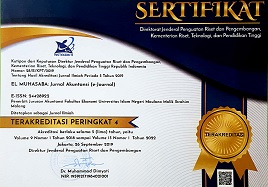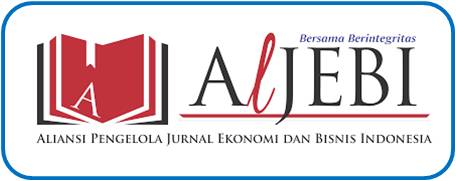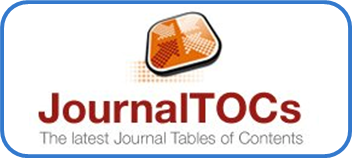ANALISIS KEPUASAN PENGGUNA E-FILLING DENGAN PENDEKATAN COBRA DAN MODIFIKASINYA DI KOTA SUMBAWA BESAR
Abstract
The purpose of this study was to determine the factors that influence the satisfaction of E-Filing users with the COBRA approach and its modifications. The variables used in this study are cost, opportunity, benefit, risk, utility, efficiency, and user satisfaction of E Filing. This type of research approach is quantitative and analyzed by multiple linear regression. This study uses primary data involving 141 respondents in the city of Sumbawa Besar. This study indicates that cost, opportunity, and utility have no significant effect on e-filing user satisfaction. Benefit and efficiency have a significant positive effect on e-filing user satisfaction. Risk has a significant negative effect on e-filing user satisfaction
Keywords
Full Text:
PDFReferences
Ahmed, A.M., Hassan, B., Saeed, S., & Saeed, A. A. (2016). Evaluating e-Government Services in Kurdistan Institution for Strategic Studies and Scientific Research Using the EGOVSAT Model. Journal of Applied Research. 1(2)
Alias,E.S., Idris, S. H. M., Ashaari, N. S., & Kasimin, H..(2011). Evaluating e-Government Services in Malaysia Using the EGOVSAT Model. Proceedings of the 2011 International Conference on Electrical Engineering and Informatics.Bandung, 17-19 July 2011.
DeLone,W., & McLean, E. (2003). The DeLone and McLean model of information systems success: A ten-year update. Journal of Management Information Systems, 19(4), 9–30
Dowling, G., & Staelin, R. (1994). A model of perceived risk and intended risk handling activity. Journal of Consumer Research, 21(1), 119–125.
Foley,P., & Alfonso,X.(2009). E-government and the transformation agenda. Public Administration, 87(2), 371–396.
Guimaraes, T., Staples, D. S., & McKeen, J. D. (2003). Empirically Testing Some Main User-Related Factor for Systems Development Quality. Quality Management Journal 10, No. 4: 39- 54.
Hauser, J., Simester,D., & Wernerfelt, B. (1994). Customer satisfaction incentives.Marketing Science, 13(4), 327–350.
Heeks, R. (2008). ICT4D 2.0: The next phase of applying ICT for international development. Computer, 41(6), 26–33.
Horan, T., & Abhichandani, T. (2006). Evaluating user satisfaction in an e-government initiative: Results of structural equation modeling and focus group discussions. International Journal of Information Technology and Management, 17(4), 187–198.
Ives,B., M. H. Olson., dan J.J., Baroudi. (1983). “The Measurement of User Information Satisfaction” . Communication of the ACM. 26 (10).pp 785–793
Jefriando, M. (2016). https://finance.detik.com/berita-ekonomi-bisnis/d-3169063/ini-keluhan-wajib-pajak-saat-lapor-spt-lewat-e-filing. Diakses pada 23 September 2021
Kotler, Philip & Keller, K.L .(2002). Manajemen Pemasaran. Edisi 13. Jilid 2. (Bob sabran. Terjemahan). Jakarta: Erlangga
Lee,H., Sivarajah,U., Monlar, A., Weerakkody, V., & Irani, Z. (2015). A User Satisfaction Study of London’s Congestion Charge- e-Service: A Citizen Perpective. International Journal of Electronic Government Research.11 (2). 35-50
Lee, J., Kim, H., & Ahn, M. (2011). The willingness of e-government service adoption by business users: The role of offline service quality and trust in technology. Government Information Quarterly, 28(2), 222–230.
Lee,K., & Tan,S. (2003). E-retailing versus physical retailing: A theoretical model and empirical test of consumer choice. Journal of Business Research, 56(11), 877–885.
Lloyd, B. (2005). How Has the Internet Affected the Way We Communicate Within This New Era? Can We Use This to Our Advantage?.Conference Proceedings: New Zealand Association for Cooperative Education Annual Conference, Palmerston North. 31-35
Machmud, R.(2018). Buku Kepuasan Penggunaan Sistem Informasi.Ideas Publishing. Gorontalo
Medeni, D., Erdem, A., Osman, I. H., Anouze, A. L., Irani, Z., & Lee, H . (2011). Information society strategy & e-government gateway development in Turkey: Moving towards integrated processes and personalized services. Proceeding of tGov Workshop' 11 (tGOV11), London-UK. March 17–18 2011.
Mitchell, V., Davies, F., Moutinho, L., & Vassos, V. (1999). Using neural networks to understand service risk in the holiday product. Journal of Business Research, 46(2), 167–180.
Nur, T.F., dan Valentinus . (2020). Kelemahan Penggunaan E-Filling Pada Pengisian Surat Pemberitahuan Tahunan Pajak Penghasilan Orang Pribadi Dengan Periode Penghasilan Kurang Dari 12 Bulan. Jurnal Administrasi Bisnis Terapan Volume 2 Nomor 2,92-102
Osman, I. H., Anouze, A. L., Irani, Z., Al-Ayoubi, B., Lee, H., Balci, A., Medeni, T. D., & Weerakkody, V. (2014). COBRA framework to evaluate e-governmnet services: A citizen-centric perspective. Government Information Quarterly. 31 (2014). 243-256.
Pan,Y., & Zinkhan,G. (2006). Exploring the impact of online privacy disclosures on consumer trust. Journal of Retailing, 82(4), 331–338.
Parasuraman,V., Zeithaml,A.,& Berry, L. (1988). SERVQUAL: A multiple-item scale for measuring consumer perceptions of service quality. Journal of Retailing, 64(1),12–40.
Rowe, W. (1977). An anatomy of risk. New York: John Wiley and Sons.
Sang, S., & Lee,J. -D. (2009). A conceptual model of e-government acceptance in public sector. Proceeding of 3rd International Conference on Digital Society, February 1–6, Cancun-Mexico.
Shareef, M., Kumar, V., Kumar, U., & Dwivedi, Y. (2011). E-government adoption model(GAM):Differing service maturity levels. Government Information Quarterly.28(1).17–35
DOI: https://doi.org/10.18860/em.v13i1.14176
Refbacks
- There are currently no refbacks.
Megawati Soekarnoputri Building
Accounting Department, Faculty of Economics
Jln. Gajayana 50 Telp (0341) 558881
E-mail: elmuhasaba@uin-malang.ac.id
Universitas Islam Negeri Maulana Malik Ibrahim Malang
E-ISSN 2442-8922
Member of:
Indexed by:
















